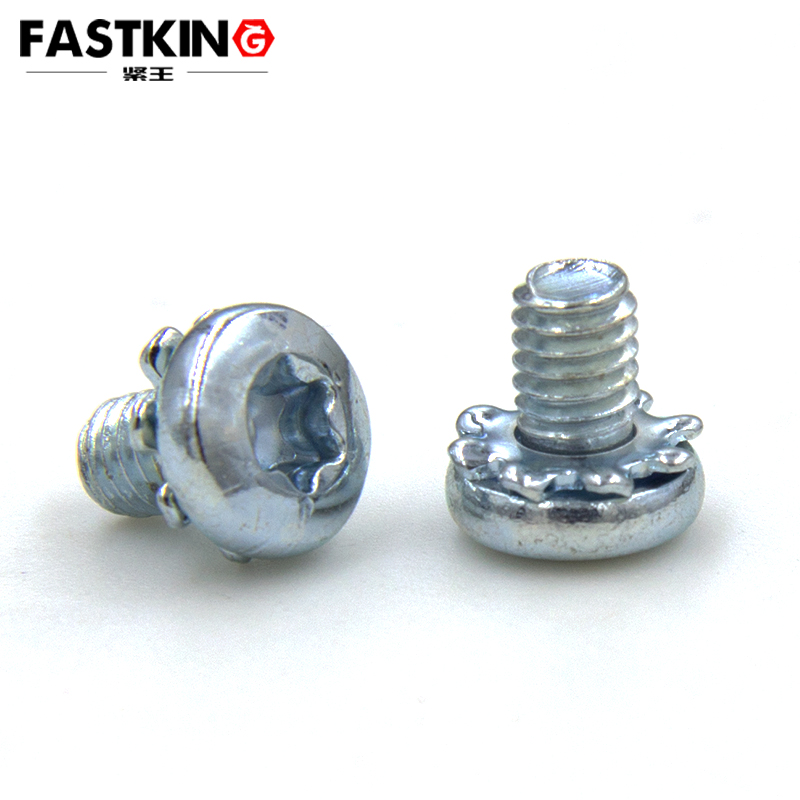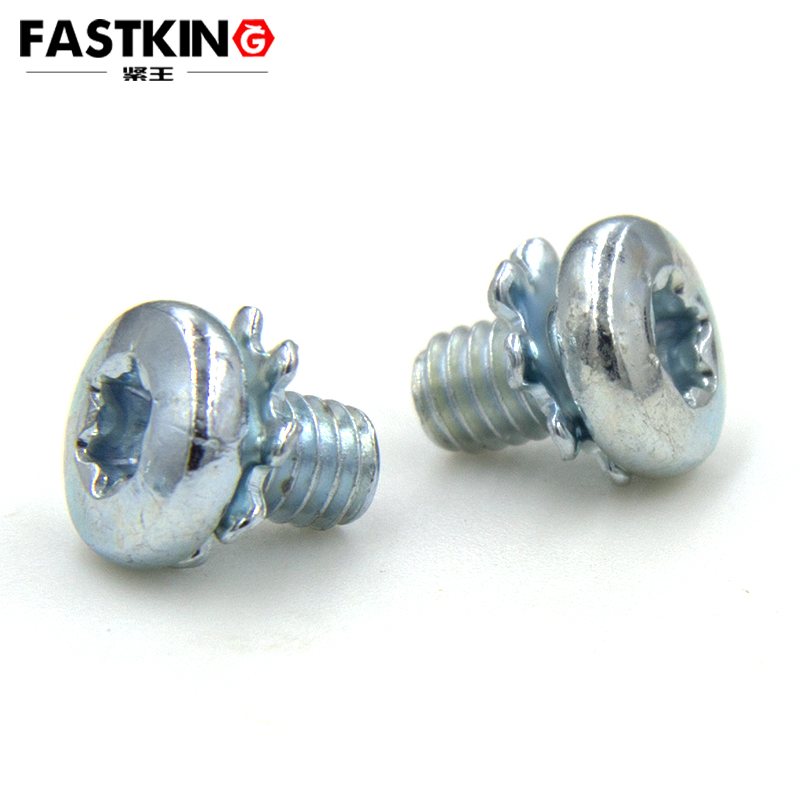- Torx screw,torx machine screw,torx self tapping screw
- sales@jlfastener.com
Combination screws of plum blossom and external teeth in the pan head
Torx sems screw
Combination screws of plum blossom and external teeth in the pan head
- Description:In the vast world of fasteners, pan-head internal hexagon socket screws with external teeth play an indispensable role in numerous fields, thanks to their unique design and outstanding performance. Fr
The "small size" is a distinct visual feature of pan-head internal hexagon socket screws with external teeth — their overall dimensions typically range from a few millimeters to over ten millimeters, and they weigh only a few grams. This allows them to be easily embedded in the narrow spaces of various precision equipment without occupying additional assembly area, perfectly meeting the requirements of modern industry for "lightweight" and "compact" designs. Meanwhile, the "great capability" lies in the synergistic effect of its three structural designs, with every detail enhancing its performance.
From the perspective of the "load-bearing capability" of the pan head, its curved top and wide pressure-bearing surface form an ingenious design: when the screw is tightened, pressure can be evenly distributed to the surface of the connected component through the pan head, reducing the stress intensity per unit area by more than 30%. Compared with pointed screws that tend to cause material deformation, pan-head screws can effectively prevent cracking and indentation when connecting fragile materials such as wooden furniture and plastic casings, enabling "small contact" to achieve "great protection". This is also the key reason for their wide application in fields with high material protection requirements, such as smart home appliances and children's toys.

The "torque transmission capability" of the internal hexagon socket demonstrates even more professional advantages. Traditional slotted screws (flat-head screws with a single slot) tend to slip when the torque exceeds 5N·m. However, the internal hexagon socket, through the precise engagement between its hexagonal curved slot and the tool, achieves a torque transmission efficiency of over 95% and can withstand a tightening force of 15-20N·m. In scenarios requiring high-precision assembly, such as automobile instrument panels and industrial sensors, this "small socket" can stably transmit high torque, ensuring that components remain in accurate positioning for a long time and reducing the risk of failures caused by assembly deviations.
The "anti-loosening capability" of the external teeth is crucial for adapting to complex environments. The external teeth of the screw are barb-shaped; when screwed in, they cut into the surface of the connected component, forming an irreversible mechanical engagement. Combined with the friction of the thread itself, the anti-loosening effect is 2-3 times better than that of ordinary screws. In fields where equipment operates in prolonged vibrating environments, such as engineering machinery and rail transit, even if the equipment generates high-frequency vibrations during continuous operation, the external teeth can firmly "lock" the connection position and prevent the screw from loosening. Data shows that the failure rate of equipment using such screws due to fastener loosening can be reduced by more than 60%.
This characteristic of "small size carrying great capability" also enables the screw to play a role in cross-boundary fields: in medical equipment, its precision structure can meet the sterile assembly requirements of surgical instruments; in new energy equipment, its corrosion-resistant material and anti-loosening design can adapt to the complex working conditions of battery compartments. This tiny screw is like an "energy node" in the industrial system, leveraging its small volume to drive improvements in safety and efficiency across multiple fields.


